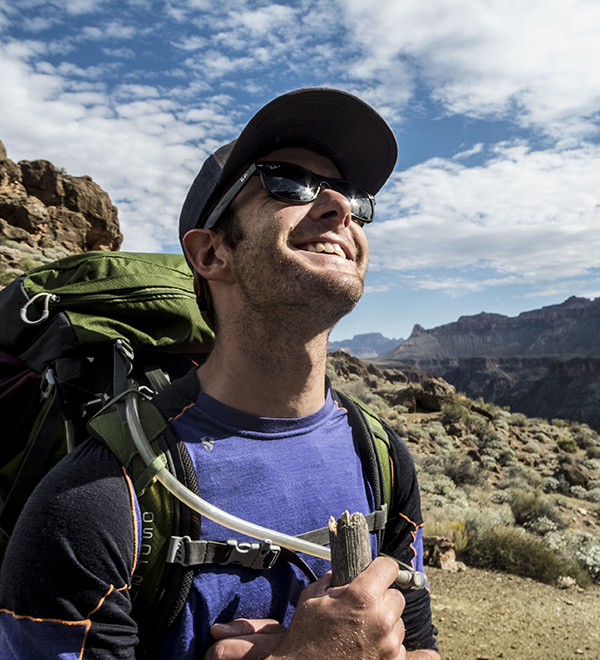
You’d think the Grand Canyon — the homeland of at least 11 Native American tribes and one of the most visited national parks — would be protected from uranium contamination. Think again.
Uranium mines and mining claims outside park boundaries threaten to pollute the most remarkable gorge in the world. We're working alongside many partners in support of regional tribes to permanently protect lands and waters surrounding Grand Canyon National Park from mining.
Uranium deposits sit deep within sandstone, siltstone, and mudstone layers across the Southwest. In the Grand Canyon region, uranium ore is found in geologic features called breccia pipes.
Uranium mining near Grand Canyon National Park began in the 1950s at Orphan Mine, just two miles from Grand Canyon Village. At least eight uranium mines have operated near the park, including the active Canyon Mine (now renamed Pinyon Plain Mine) that threatens springs inside the Grand Canyon.
Native communities, local governments, hunters, anglers, conservation groups, and many others successfully campaigned for a temporary mining ban around the Grand Canyon in 2012, blocking new efforts to mine uranium on 1 million acres of public lands surrounding the Grand Canyon. As of May 2022, there were still nearly 600 mining claims on national forest and other public lands around the Grand Canyon, despite repeated legislative attempts in Congress to permanently ban new mining around the park.
Building on decades of advocacy, tribes successfully petitioned President Biden in 2023 to protect their ancestral lands and waters around the Grand Canyon as a national monument. Baaj Nwaavjo I'tah Kukveni – Ancestral Footprints of the Grand Canyon National Monument now protects a critical portion of the Colorado River's watershed from new uranium mining and contamination.

Canyon Mine is a poster child for what can go wrong at a uranium mine in the Grand Canyon region.
The Grand Canyon is a spiritual and cultural homeland to at least 11 Native American tribes, including the Havasupai, whose name means “people of the blue-green water." The Havasupai live deep within the canyon and rely on a spring-fed creek that runs through their village to drink, cook, and irrigate fields of corn and alfalfa, as well as other ceremonial and cultural uses. Worried that Canyon Mine could contaminate the water that flows underground and feeds the seeps and springs in their village, they have opposed uranium mining around the Grand Canyon since the 1980s.
The Havasupai Tribe, alongside the Hopi Tribe, Hualapai Tribe, Kaibab Band of Paiute Indians, Las Vegas Tribe of Paiutes, Moapa Band of Paiute Indians, Paiute Indian Tribe of Utah, Shivwits Band of Paiutes, Navajo Nation, San Juan Southern Paiute Tribe, Yavapai-Apache Nation, Zuni Tribe, and the Colorado River Indian Tribes, asked President Biden to protect their ancestral lands and waters as a national monument. Biden listened, and in August 2023, he designated Baaj Nwaavjo I'tah Kukveni – Ancestral Footprints of the Grand Canyon National Monument.
The permanent mining ban tribes have long advocated for is finally a reality. Learn more about Baaj Nwaavjo I'tah Kukveni ›

The new Baaj Nwaavjo I'tah Kukveni – Ancestral Footprints of the Grand Canyon National Monument prevents new mining claims from being staked. Mines with valid existing rights, including Canyon Mine (renamed Pinyon Plain Mine), may move ahead. Most of the nearly 600 mining claims in the monument footprint, however, are unlikely to move forward.
No matter how you slice it, the Grand Canyon region simply isn't sitting on the mother lode of U.S. uranium.

When necessary, we go to court to stop unsafe uranium mining around the Grand Canyon.

Despite what industry claims, uranium mining is not a significant economic driver in the region. It’s the canyons, forests, and mountains — not uranium mines — that draw millions of visitors and their pocketbooks to the region each year.

Groundwater flow in the canyon is a bit of a mystery. Where does it go? Where does it emerge? How long does it take to get there?
Scientists need to better understand what's happening underground to determine the risks uranium mining poses to our aquifers, springs, and the Grand Canyon.
A small victory in the legal case challenging Daneros uranium mine, near Bears Ears National Monument.
Read MoreGroundwater pumping at a uranium mine near the Grand Canyon will affect the canyon's springs, scientists says.
Read MoreA rally in Salt Lake City followed by a spiritual walk in White Mesa demonstrate the Ute community's determination to see uranium mill close.
Read More